We continue with our “Baker’s Dozen of Island Peaks” programme. Next in line is Newtontoppen on the Spitsbergen archipelago, 1713 metres high.
- Required Documents
- Time Needed for Preparation
- Skills Required to Ascend
- Equipment for the Ascent
- Weather Conditions
- Safety Measures During the Trip
- Our Ascent of Newtontoppen
Required Documents
It took us a long time to prepare for the expedition. The prime reason for this was the time limitation – ascending the peak is only allowed during two months in a year. Usually, it’s March and April. Going up the mountain during other periods is impossible due to the snow melting and the polar night. The second reason is that Newtontoppen is located far beyond the tourist area #10 that tourists may not leave without the proper permit. Only the archipelago’s governor (called Sysselmannen in Norwegian) has the right to issue it, and it takes some time to prepare the documents. To get the permit, you must state the purpose of your visit, and it’s better to provide some arguments as to why you want to make the ascent. For example, we named the blog and the YouTube channel as our reason. Norwegian travel companies usually have packages that they offer travellers. Most of them decline requests for exclusive expeditions such as ours due to logistical challenges and the absence of said permits. This is what happened when I sent my request for organising the trip to one such firm, then another, and another… Every time, I got the same response: “We don’t do that kind of expeditions.” I almost lost all hope, but, after some time, managed to find a company that agreed to organise the trip according to our requirements.
Time Needed for Preparation
We planned our ascent for the end of April and started searching for the company that would organise our trip in September, so 6 months prior. But it’s better to begin the preparations even earlier. Request for the permit is sent to the governor 3–4 months before the ascent. Keep in mind that you can always get denied since Spitsbergen is a natural reserve that is not meant for tourists. Some areas on the archipelago are entirely off-limits. You won’t get a permit to enter them, and no guide will take you there without it. Needless to say, making such a trip on your own is out of the question. By the way, if you do leave tourist area #10 without a permit, you can get arrested by the Arctic police that monitors unlawful travel on the archipelago. These guys know the area very well, have very powerful snowmobiles and are armed. So, follow Spitsbergen law to avoid any unpleasant situations.
Skills Required to Ascend
There are to ways to get to the peak: on skis or on a snowmobile. It all comes down to how much time you have at your disposal. A ski tour takes 8 to 10 days, and don’t forget that you’ll have to pay your guide for the whole time since you can’t leave area #10 without one. We got to Newtontoppen on a snowmobile within a three-day expedition, spending two nights in the closed village of Pyramiden. For a snowmobile trip, you don’t need special physical skills apart from overall endurance and resistance to cold. You also need driving skills and a driver’s license for the vehicle. The latter can also be checked by the strict Arctic police. You won’t get a snowmobile without it. Be ready for a long ride – you’ll spend around 5–6 hours a day behind the wheel. Your arms, shoulders, and back can ache for want of habit. You must also be as focused and attentive as possible when driving. The Arctic holds many dangers, such as polar bears, snow storms, and ice cracks.
Equipment for the Ascent
You won’t need any gear to make the ascent on a snowmobile. The company organising the expedition will provide you with the necessary clothing, including a warm wind-resistant overall, a ski mask, a helmet, snow boots, and gloves. All of this will prevent freezing when driving the snowmobile, since you’ll be moving at a speed of around 50 km/hour in sub-zero temperature, meaning it’s going to be very cold. You can take some personal things for overnight stays.
Our snowmobiles carried an ample supply of fuel, a tent (in case both snowmobiles broke, and we had to wait for help in the middle of the Arctic desert), signal flares and a pistol, food and a rescue kit that every Arctic guide has.
Weather Conditions
Even if you prepared and started your ascent, there is no guarantee you’d be able to finish it. The weather conditions in the Arctic are very unpredictable, and you need to take that into account. We couldn’t start our ascent on the planned date due to a massive storm over Newtontoppen and the surrounding area. Making a trip in such conditions is a terrible idea. There is a high risk of running off the route due to zero visibility, and the storm severely hinders the speed. Our guide told us that it sometimes takes several days before the trip can be made. It may not be possible to make it within the planned period at all.
Safety Measures During the Trip
Following all safety measures in the Arctic is crucial. The price for not doing so can be severe. For example, you must always follow your guide at a relatively close distance. This is necessary to avoid getting lost during the long ride. If you do lose sight of the guide and all your companions, don’t panic. Stop the snowmobile and wait instead of driving somewhere. If you see snowmobile tracks and are sure that they can only belong to your team (i.e. no one else went through that area before you), you can follow them. But it’s still better to stay and wait. The guide will surely notice your absence and come back for you using their navigator.
Crossing frozen fjords is a hazardous task, even if the ice looks stable and safe. Nobody can identify the thickness of the ice just by looking at it. It can only be done with a particular drill. We had to cross two fjords during our expedition: Tempelfjorden and Billefjorden. There, our guide drilled a hole every 4–5 kilometres and wrote down the measurements in a notebook. The critical ice thickness that is not fit for the snowmobile is below 25–30 centimetres. During our trip, only one place had that critical thickness. Usually, it was about 40 to 50 cm. Some people don’t follow these rules, sadly, which leads to accidents. In 2017, a group of Russian tourists fell through the ice on Tempelfjorden. Tragically, the guide died, while the rest of the group had severe frostbite.
Also, you mustn’t stray far from the group during stops because a polar bear can appear at any moment, and only the guide is armed.
Our Ascent of Newtontoppen
We set out on our expedition on the 30th of April 2018 in a group of three people, including our guide, on three snowmobiles. We crossed two fjords and arrived in Pyramiden in 6.5 hours. We spent the night there and left for Newtontoppen early in the morning on the 1st of May. Initially, the weather was terrible, with almost zero visibility. Our guide, who had never been at the peak of Newtontoppen before, used a navigator because it was impossible to see the horizon. We crossed Billefjorden without accidents and went in the direction of the Lomonosov Plateau through the Nordenskiöld glacier. The weather wasn’t getting any better. Quite the opposite – it started snowing, and we got into a snow storm. I was driving second in line, right behind our guide, and it was vital that I didn’t lose sight of him as that would lead to complete disorientation. This is where the skills acquired from the previous days of driving a snowmobile came in handy. It’s not easy, and the risk of turning over is especially high when going up or down.
After we came down from the Lomonosov Plateau, the weather seemingly figured it’s not going to beat us, the clouds parted, and the sun appeared. We got to the foot of Newtontoppen without issues, although its peak was somewhat covered with clouds, which is pretty typical for any mountain. Skiers often use Newtontoppen as a landmark or a starting point of their expeditions, but we were going to ascend to its very peak. During the ascent, the snowmobiles started sinking in the snow which was completely untouched since the beginning of winter. We had to unload them and leave the supplies at the foot to go light ourselves. The peak of Newtontoppen met us with strong wind and cold. After some time, the mild clouds parted, and we saw a beautiful landscape from the highest point of the Spitsbergen archipelago. We enjoyed the feeling of triumph for 30–40 minutes before heading back.
On our way back, the weather on the Lomonosov Plateau turned lousy again. Even worse, my snowmobile broke. Luckily, all guides in the Arctic must be able to make repairs in the field. Near Billefjorden, however, my vehicle gave up completely, so I rode to Pyramiden as a passenger on another snowmobile, while mine was towed on a rope. Later we found out that an ignition contact in my snowmobile went lose because I put the gloves on the dashboard. So, I advise against doing that. This is why it was essential that we took three snowmobiles rather than two for our long, challenging trip. Equipment tends to break at the least opportune moment, so you should always have a spare mode of transportation. It took us around 8 hours to get from Pyramiden to Newtontoppen and back, including the time spent on repairs. In the end, our guide confessed that he was ready to turn our caravan back due to bad visibility and weather. But we were still lucky enough to visit the highest peak of the northernmost Spitsbergen archipelago.
And so Newtontoppen (1713 metres high) became the fifth island peak that we conquered.

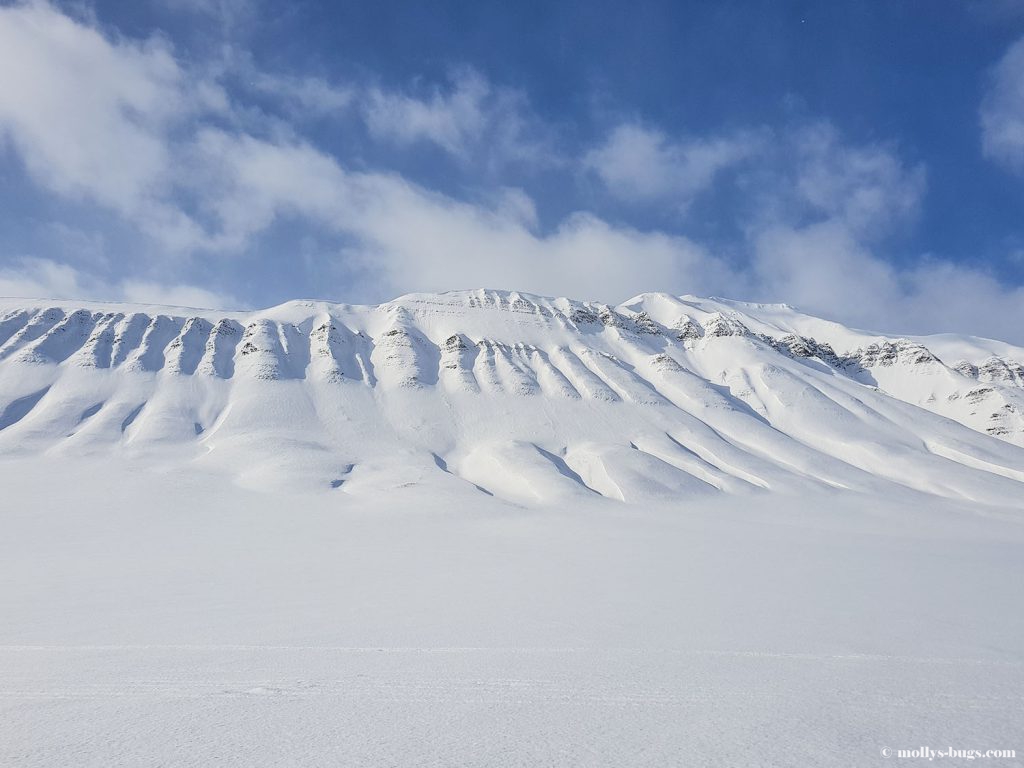
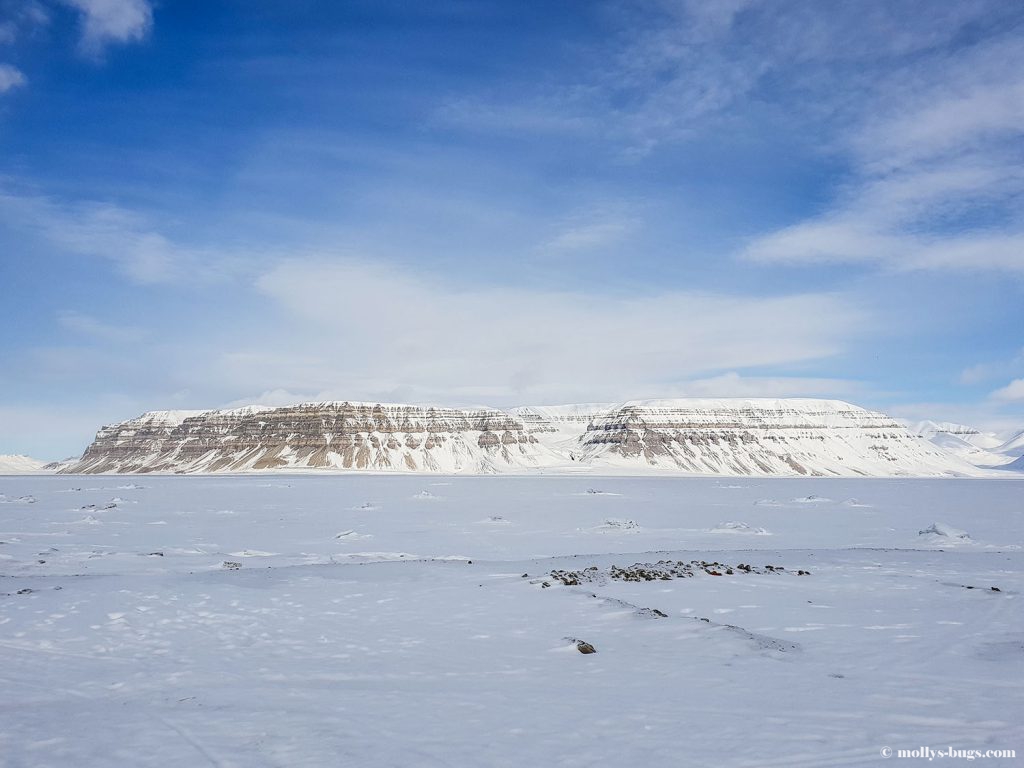
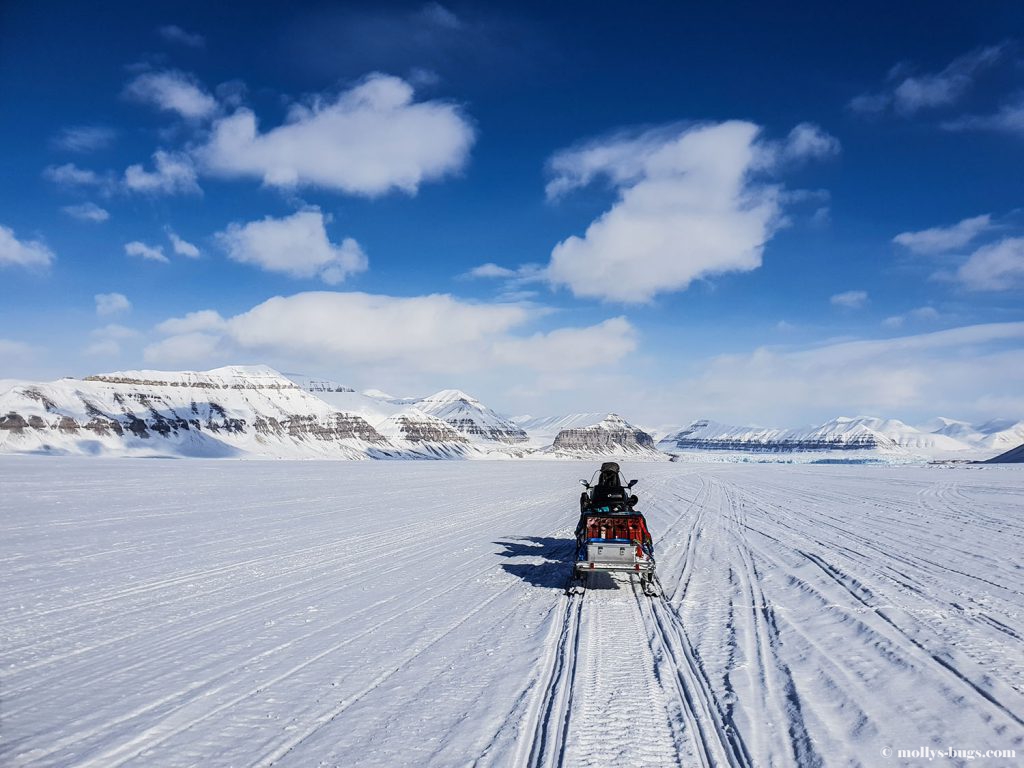
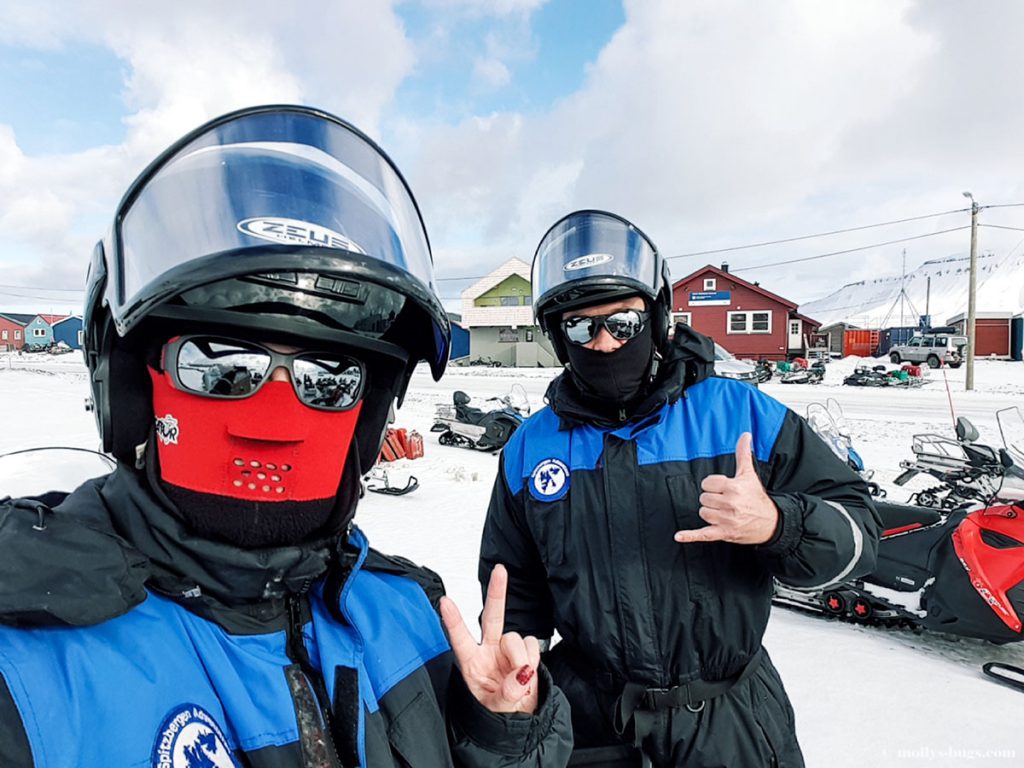
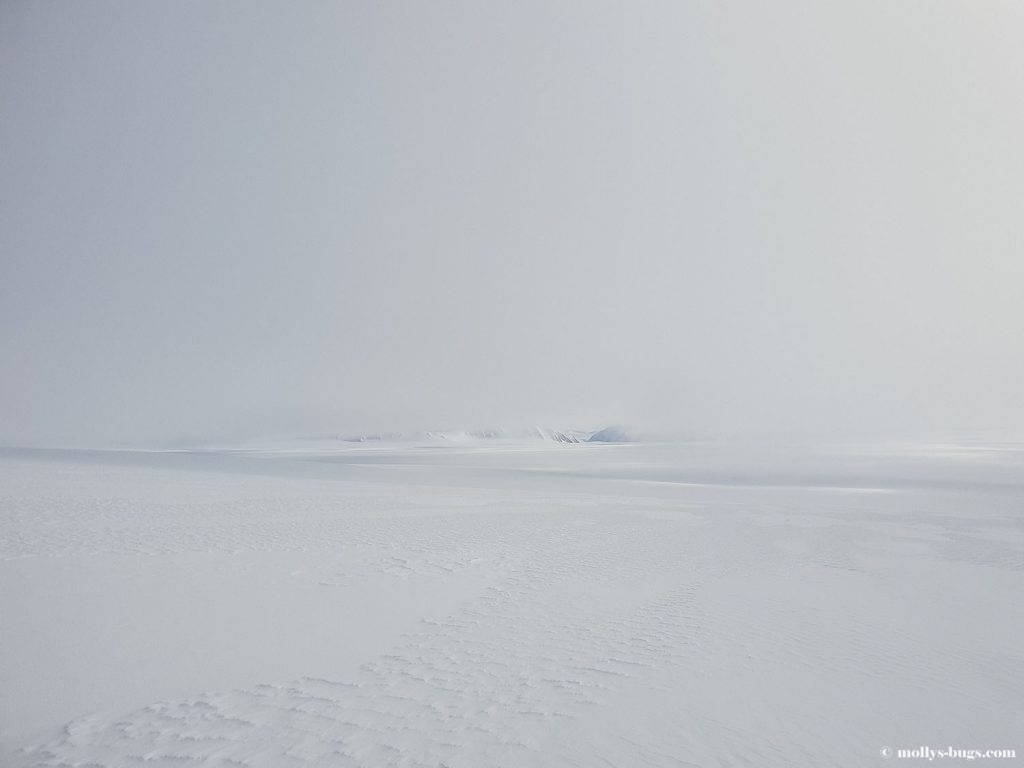
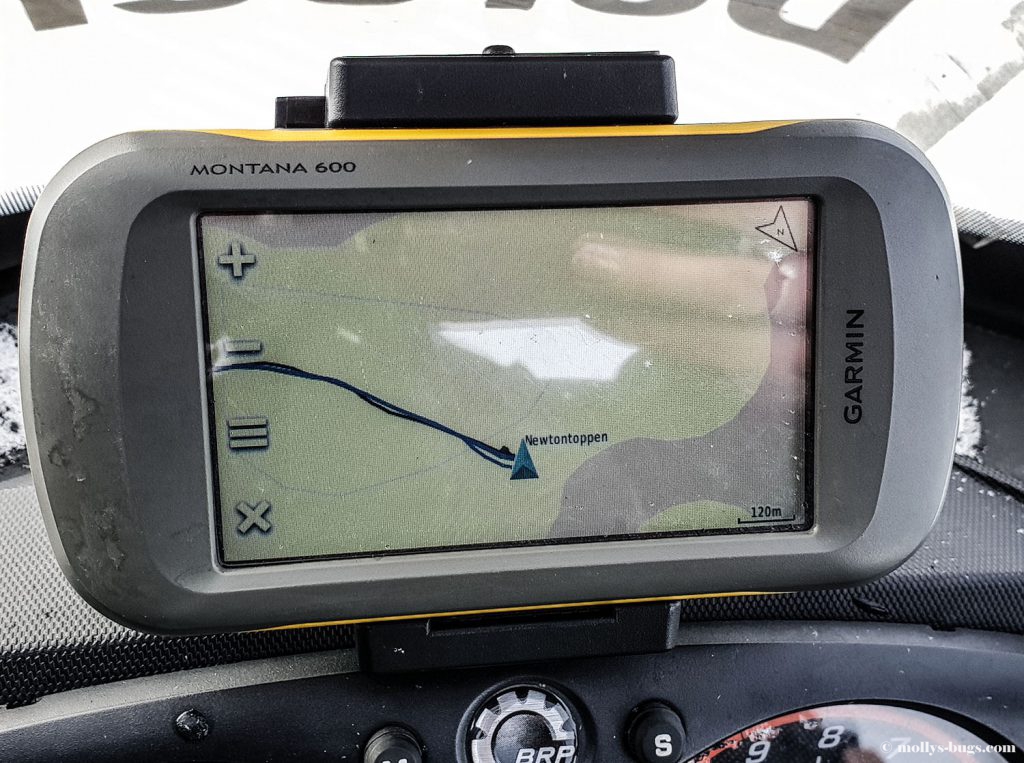
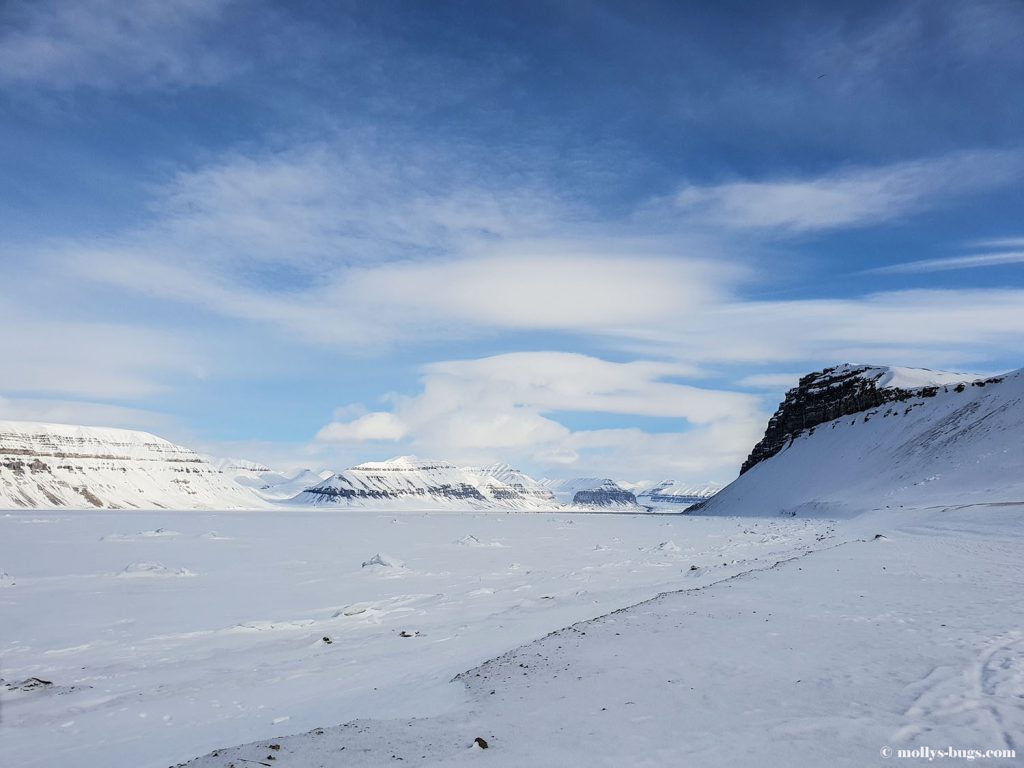
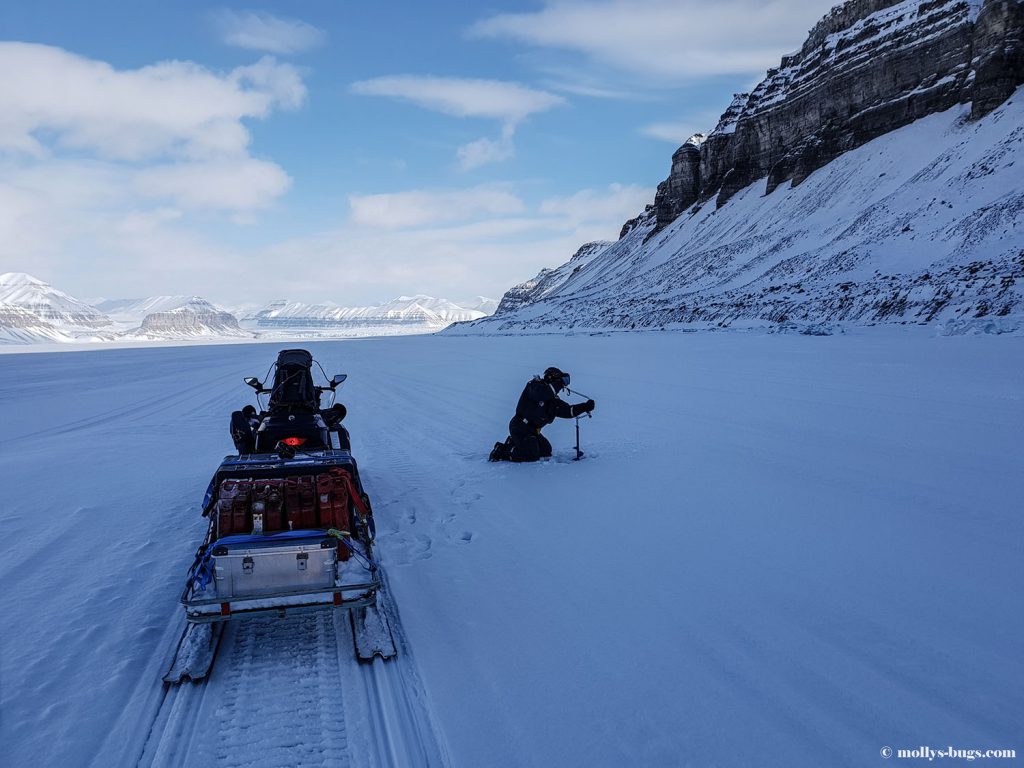
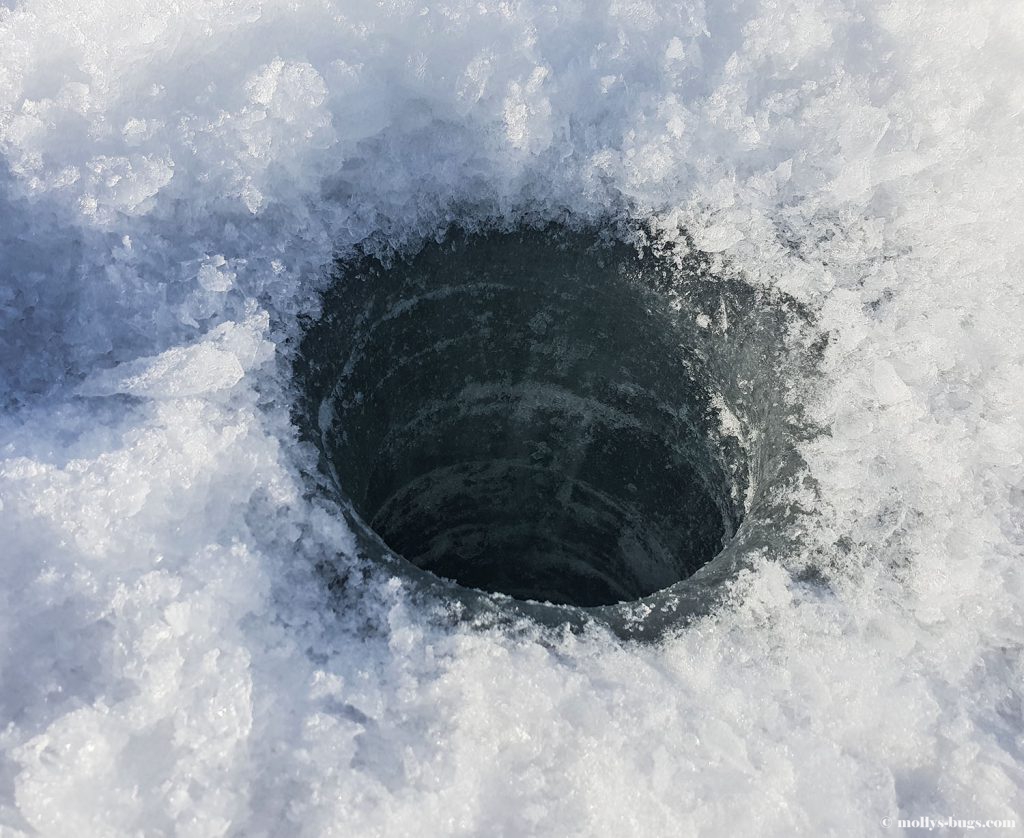
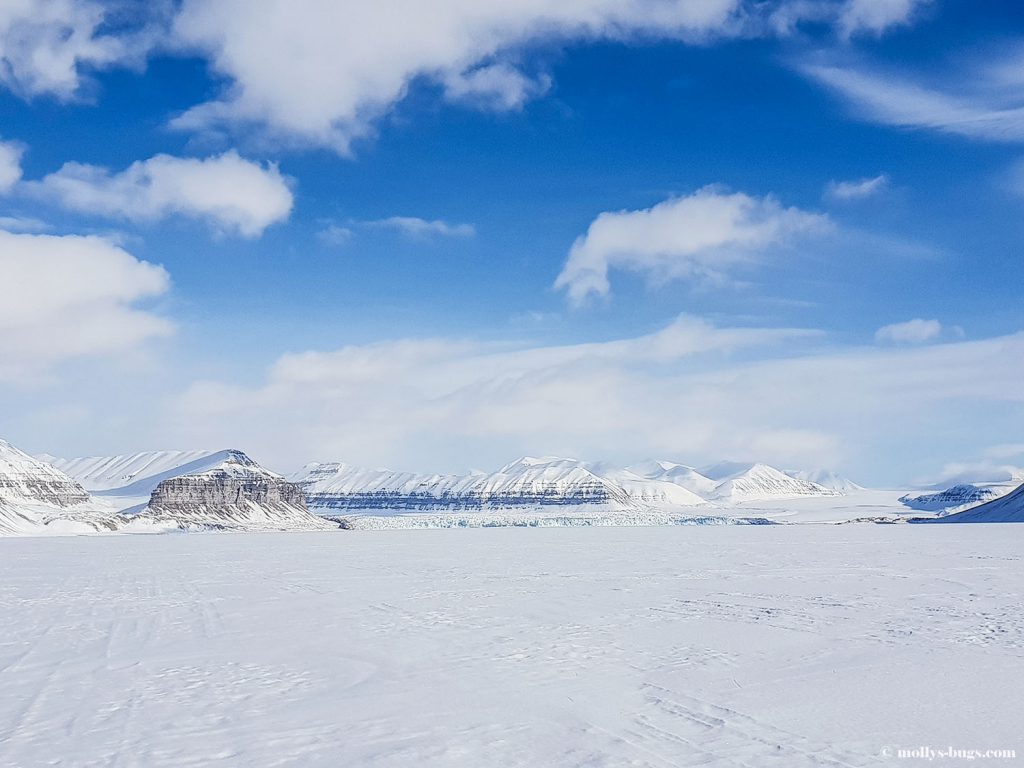
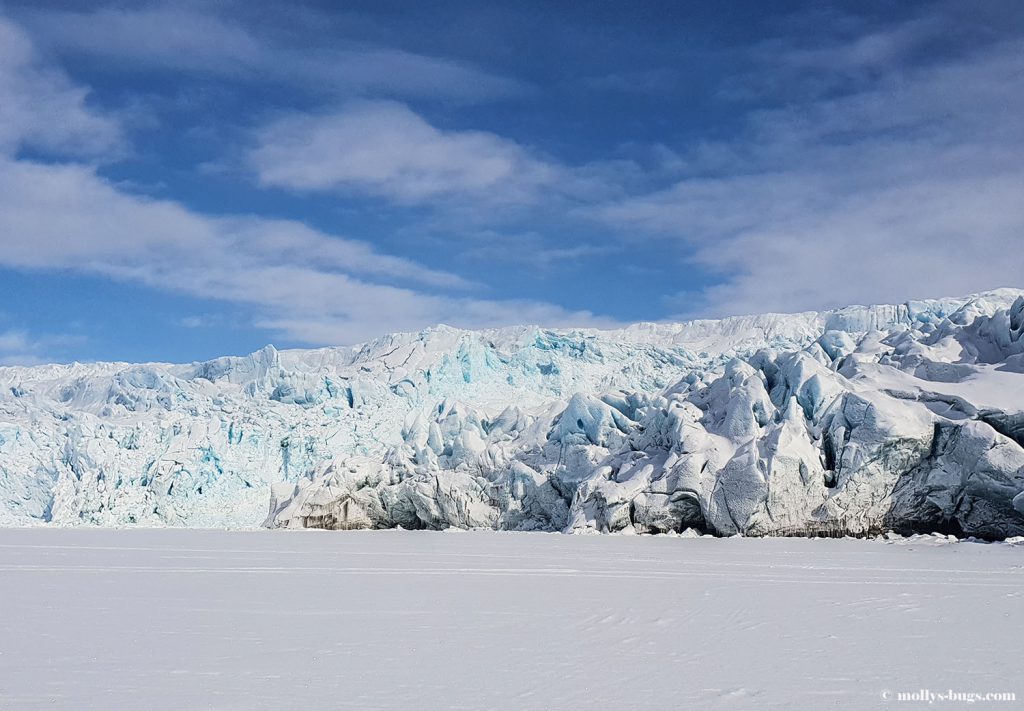
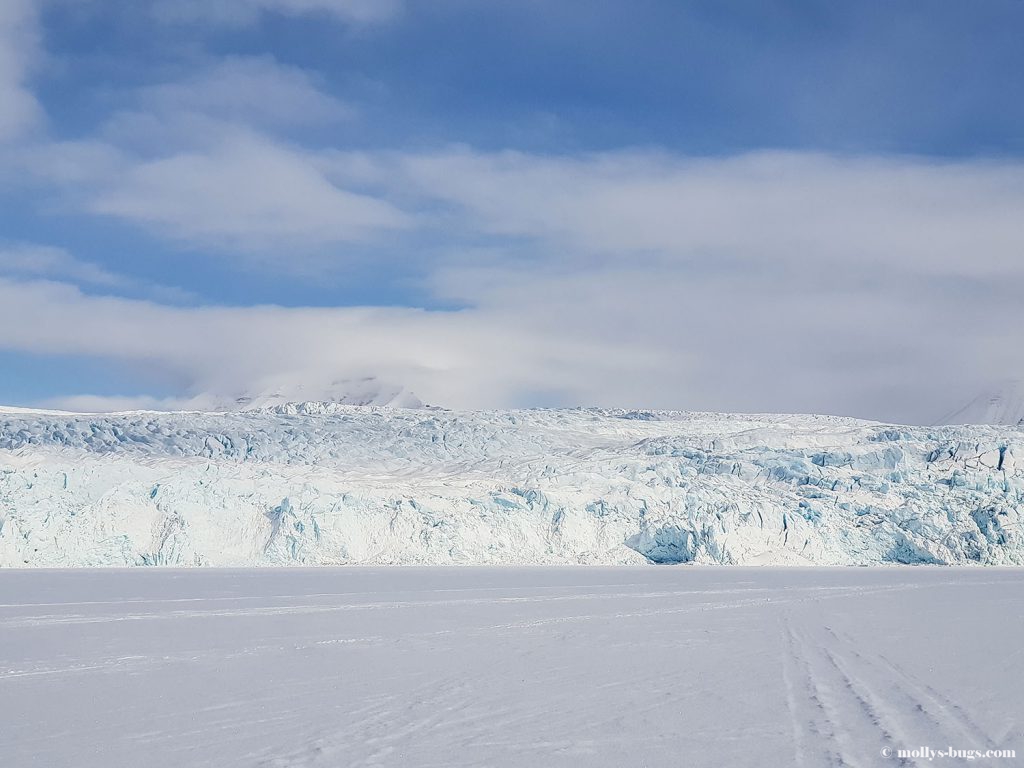
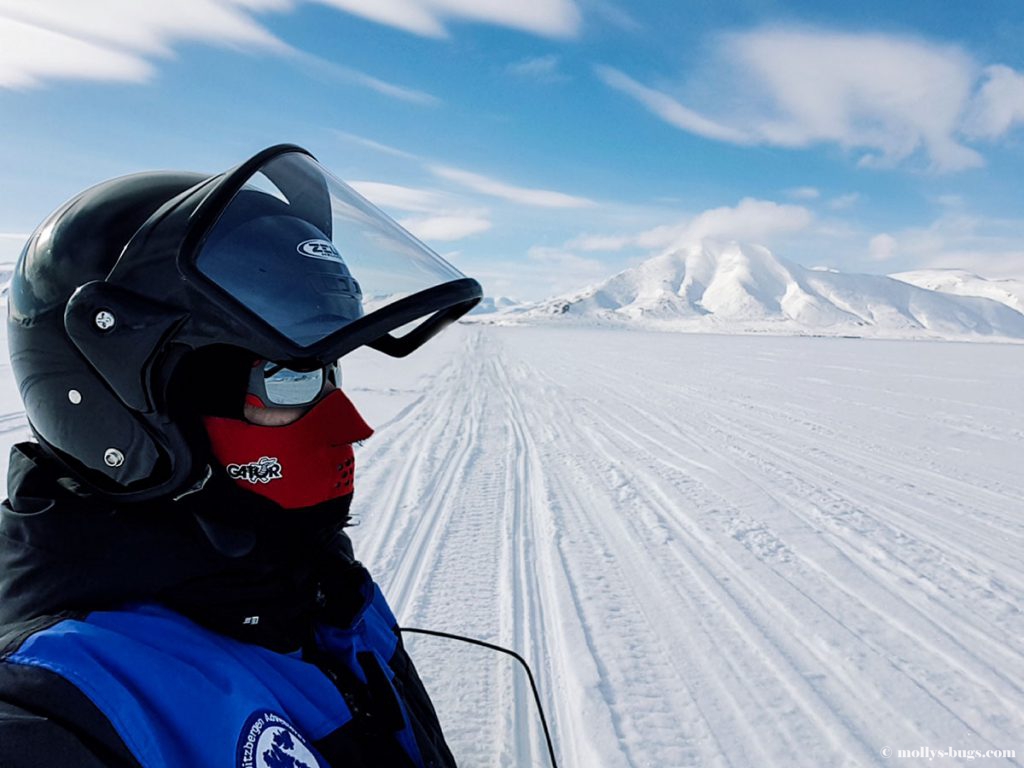
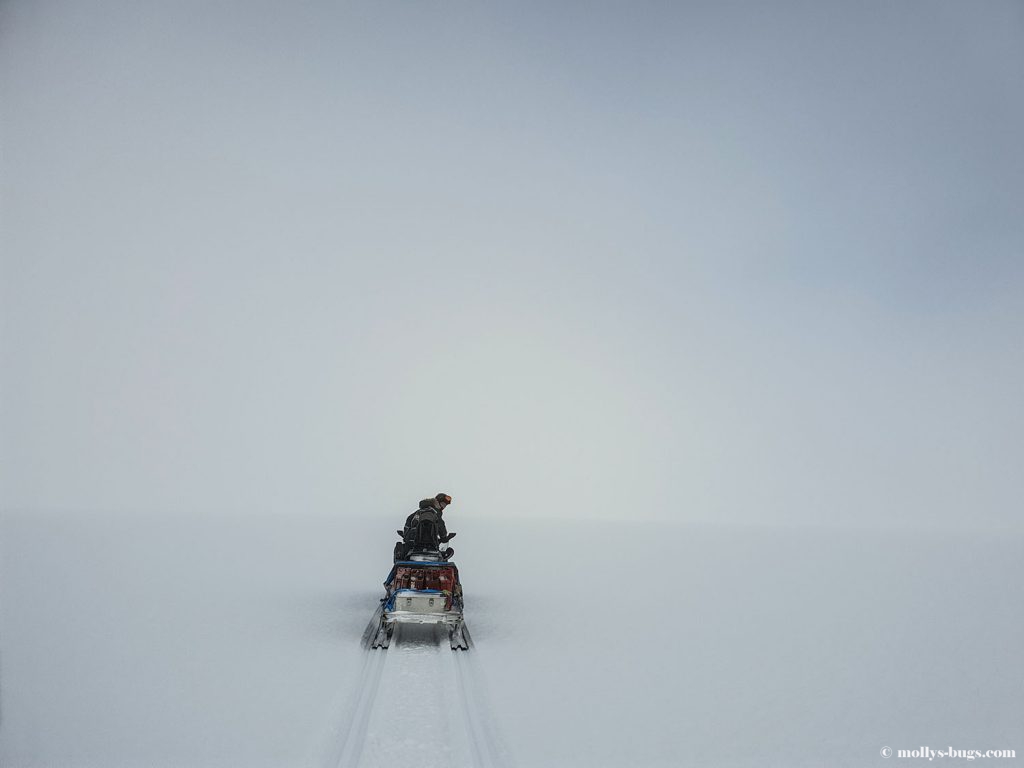
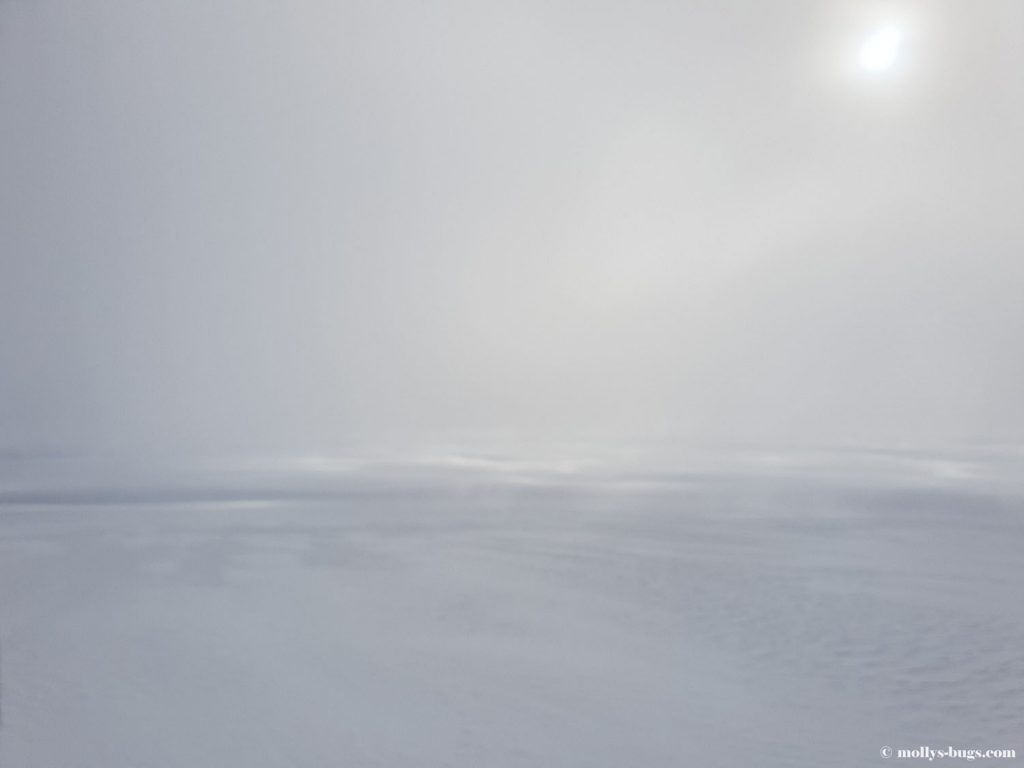
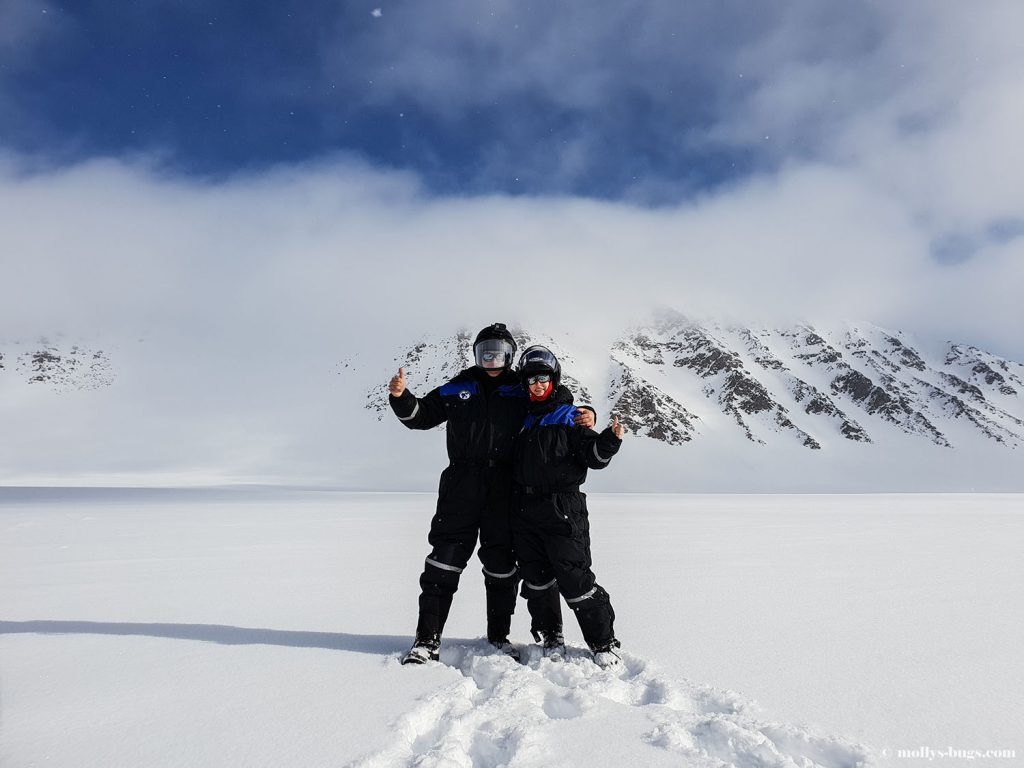
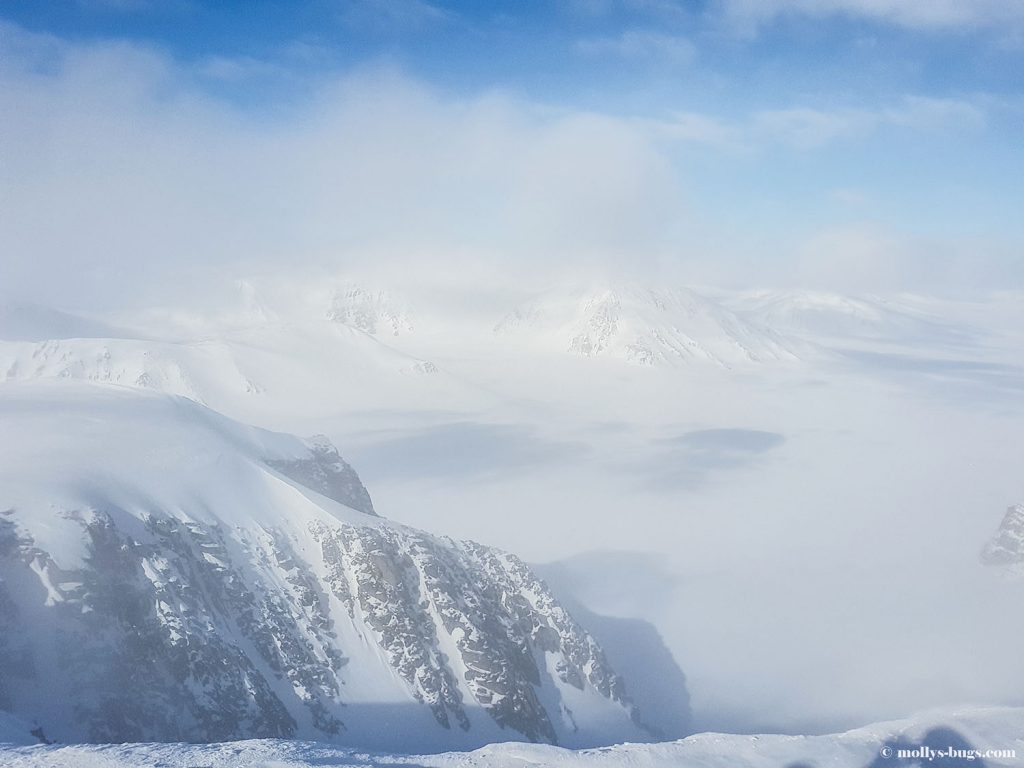
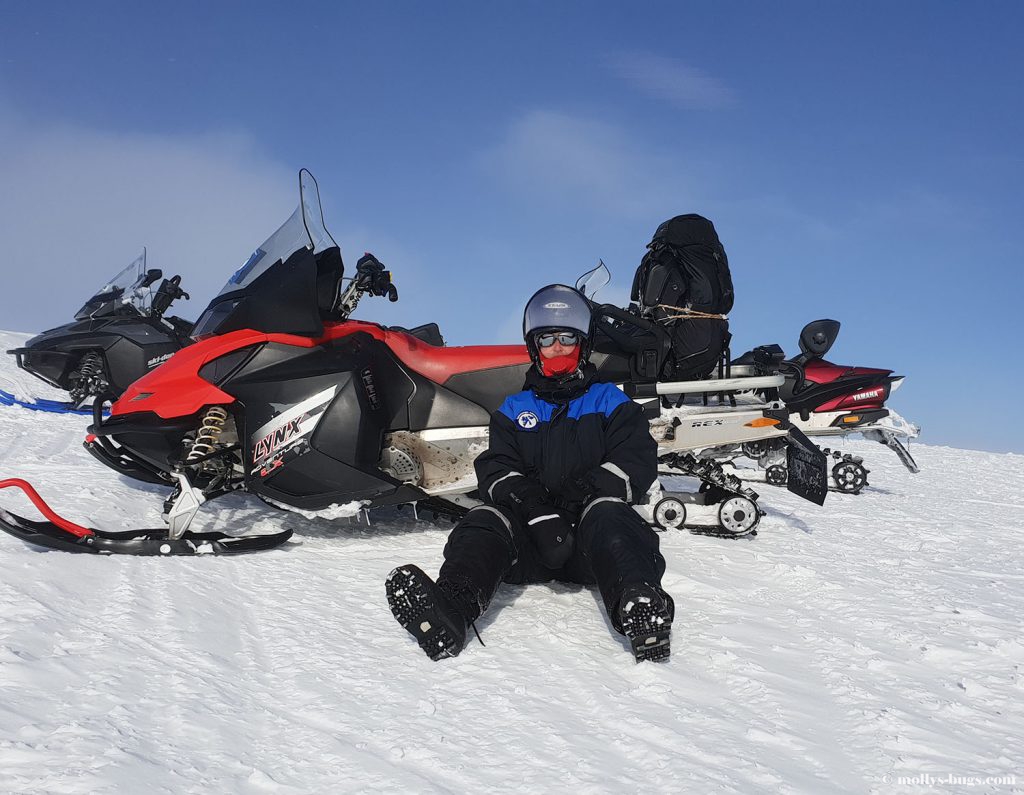
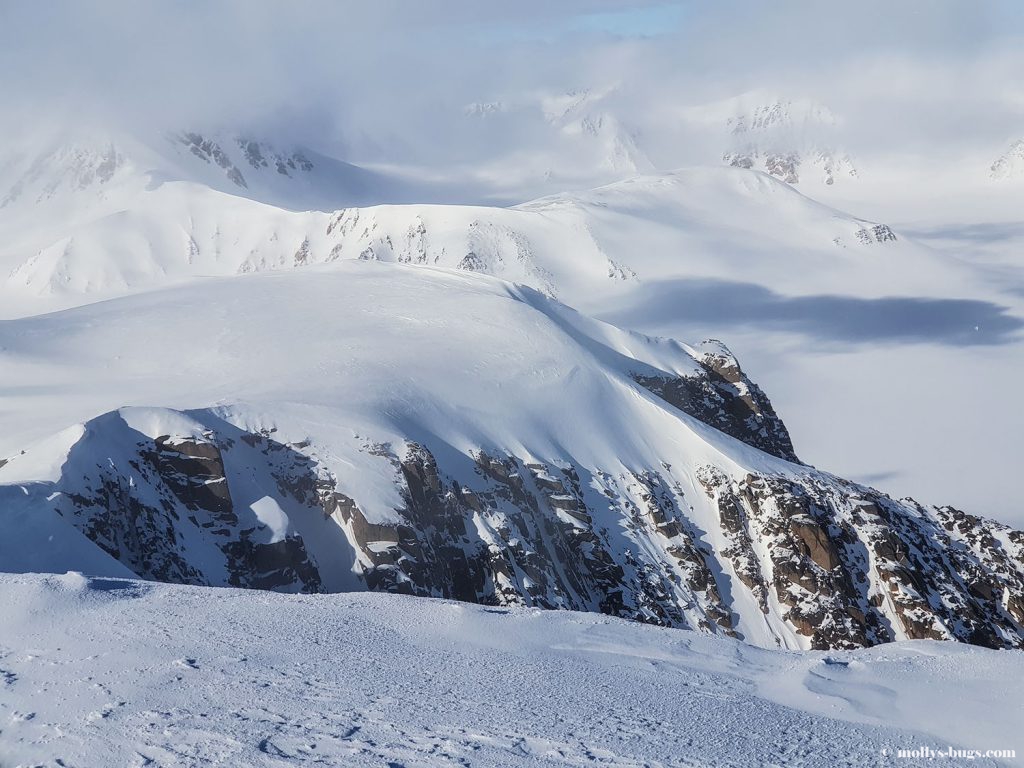
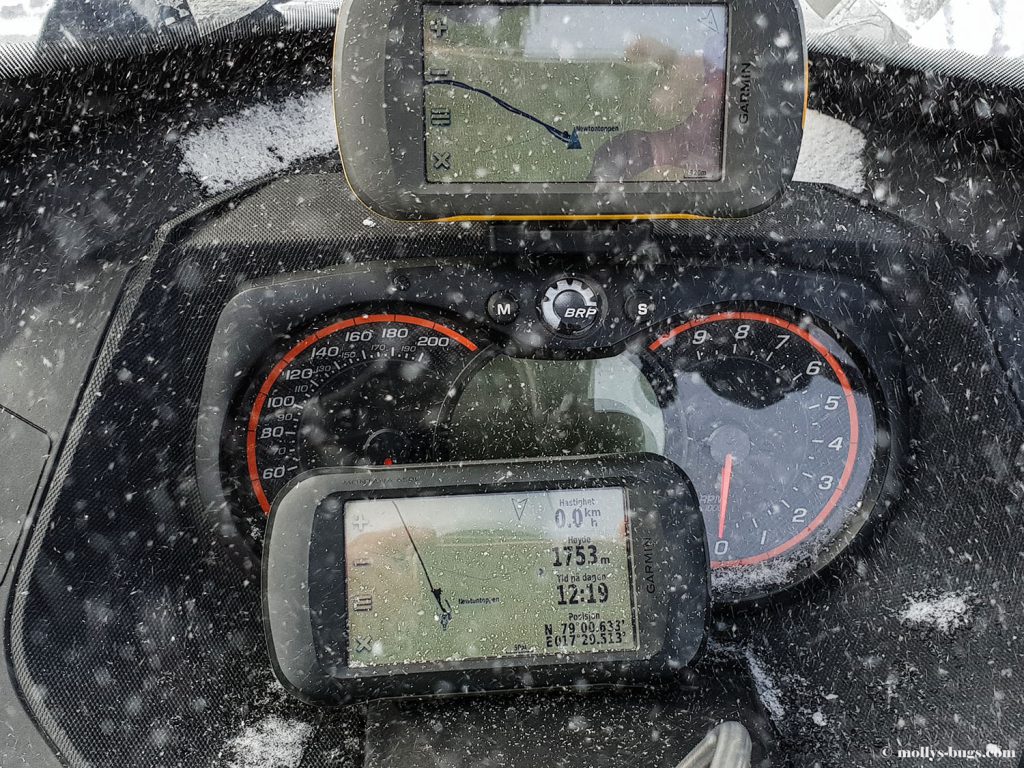
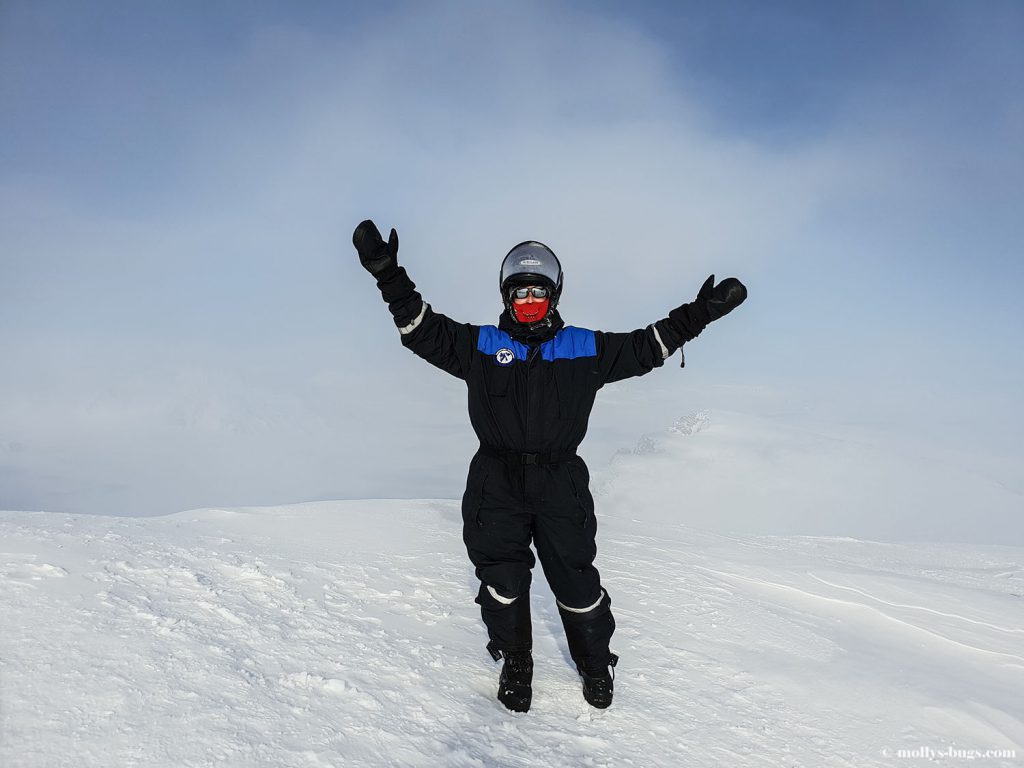
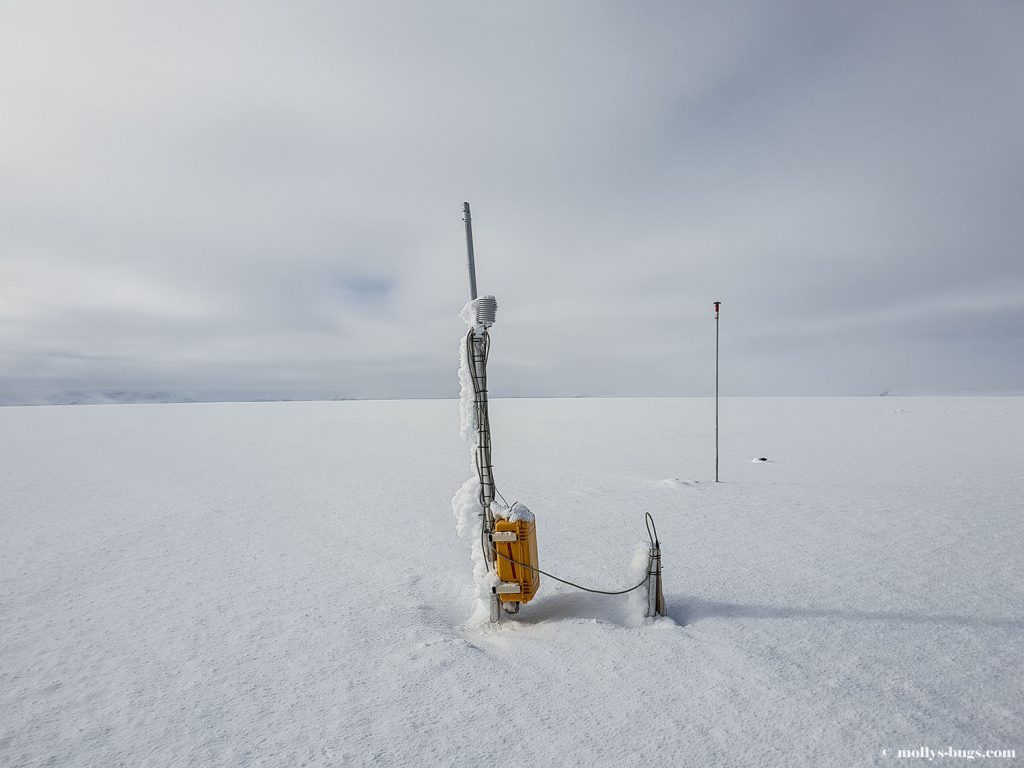
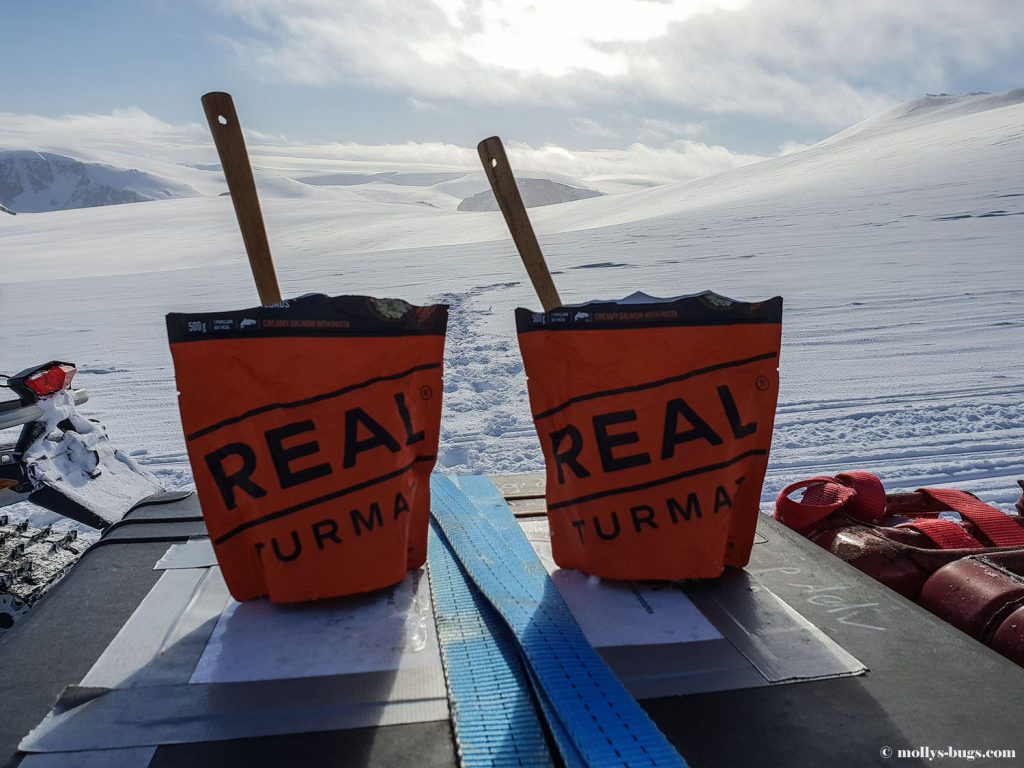
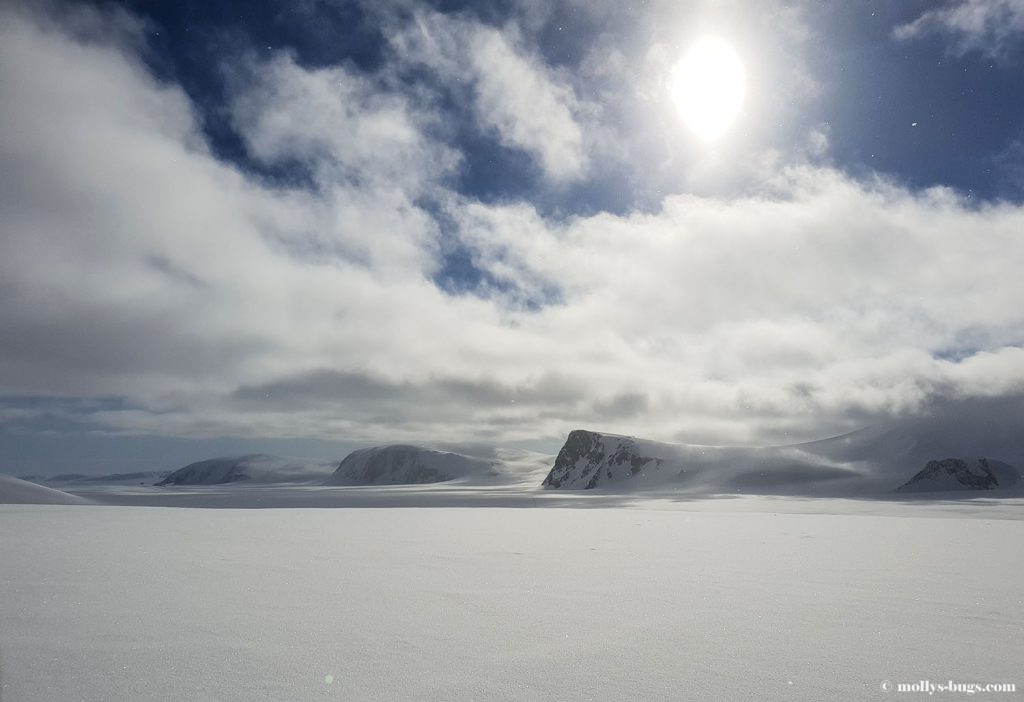
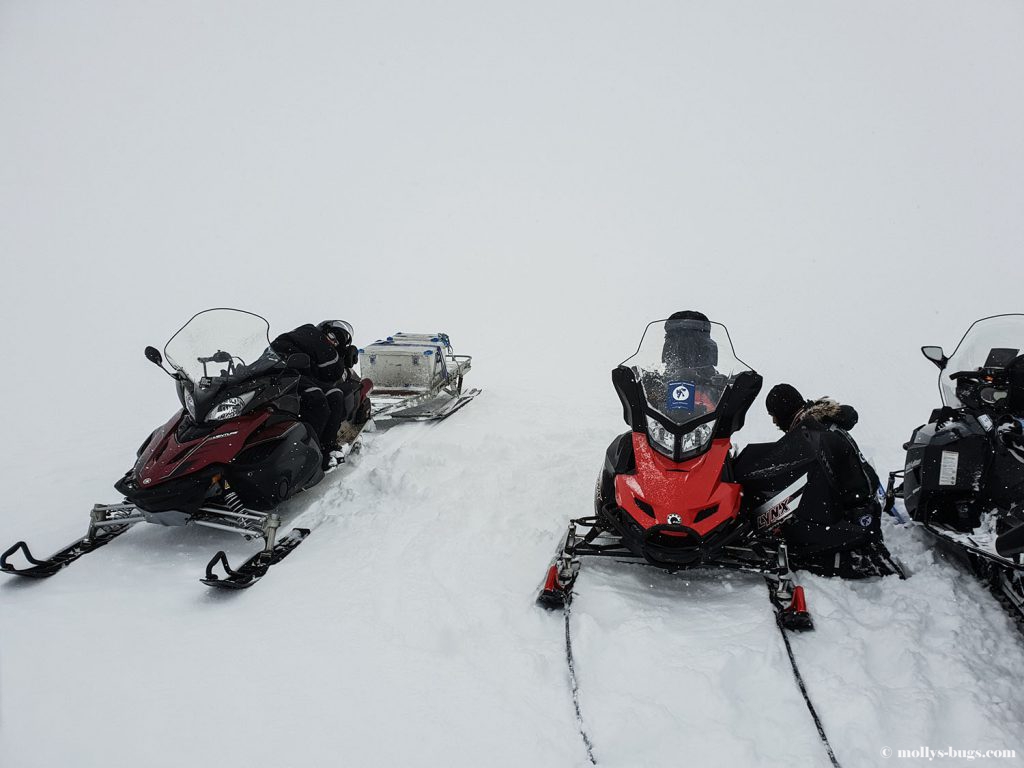
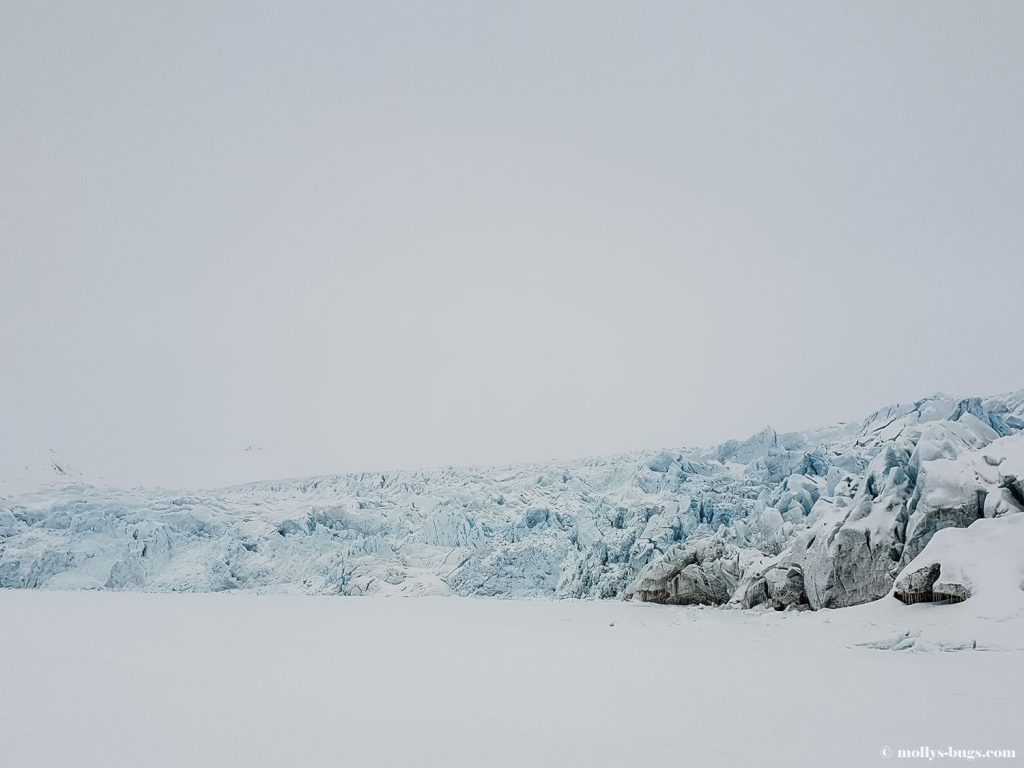
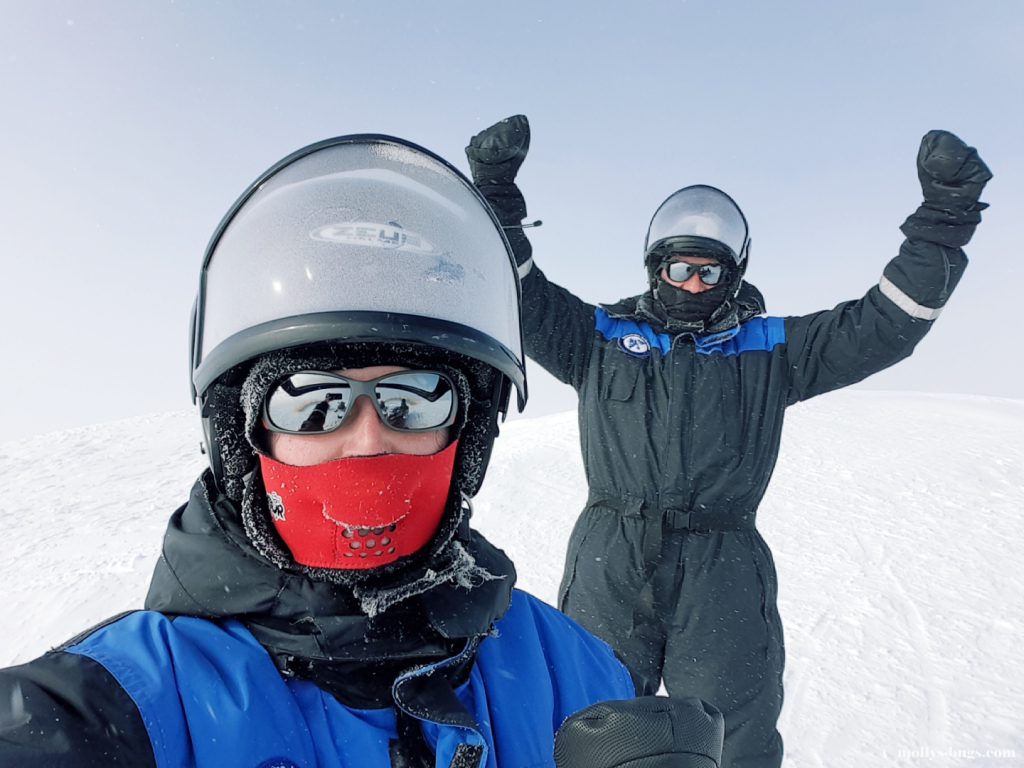
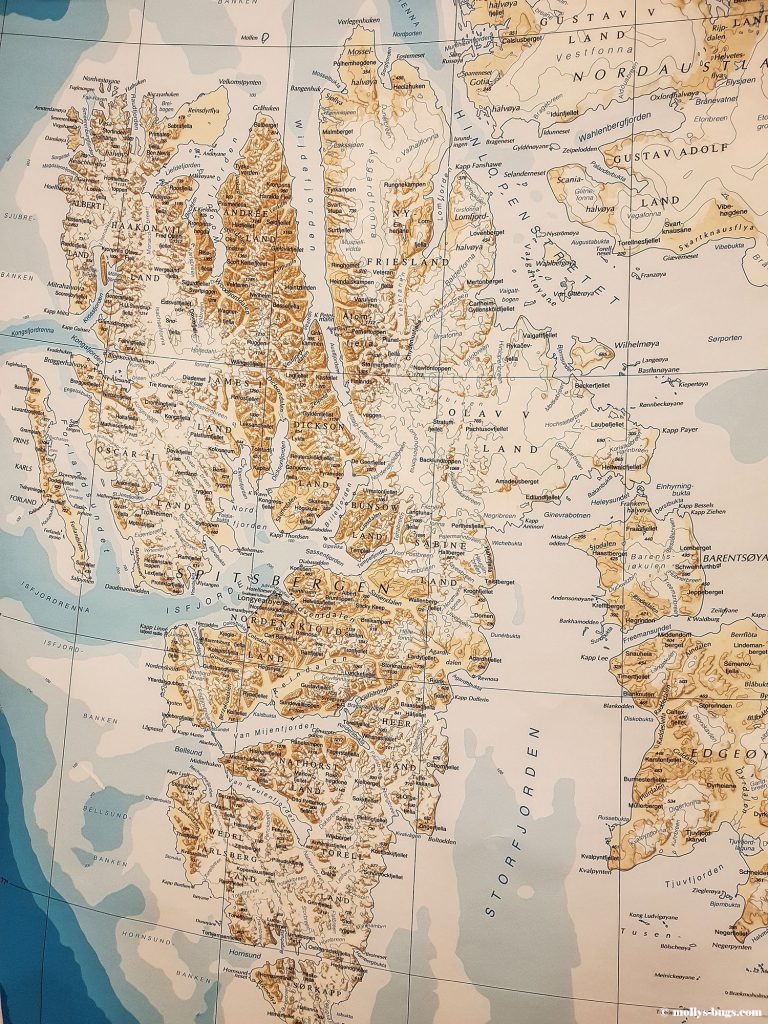






Leave a Reply